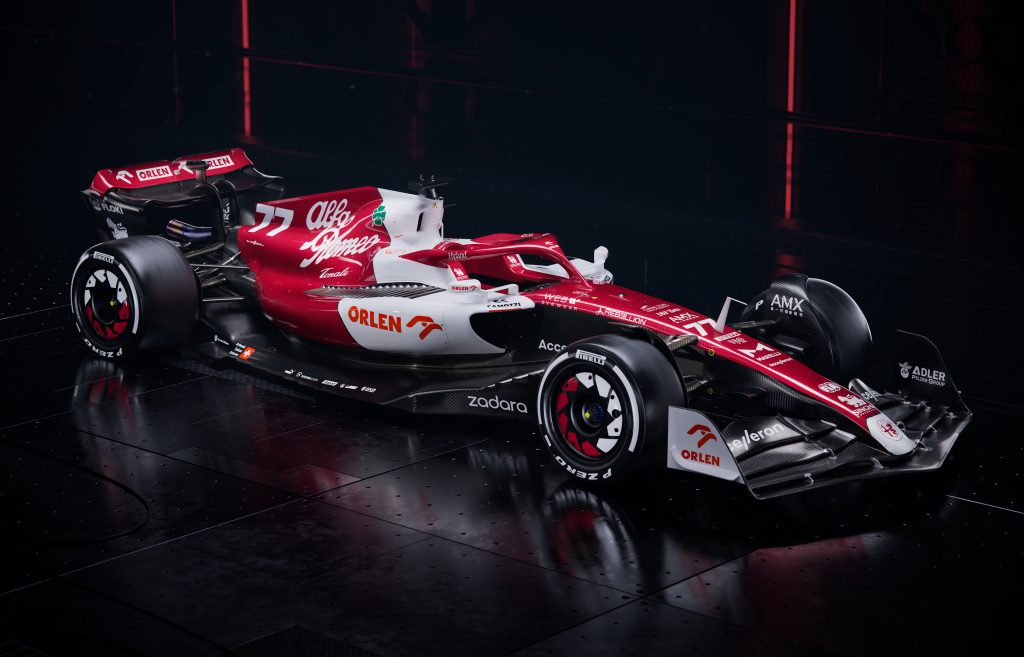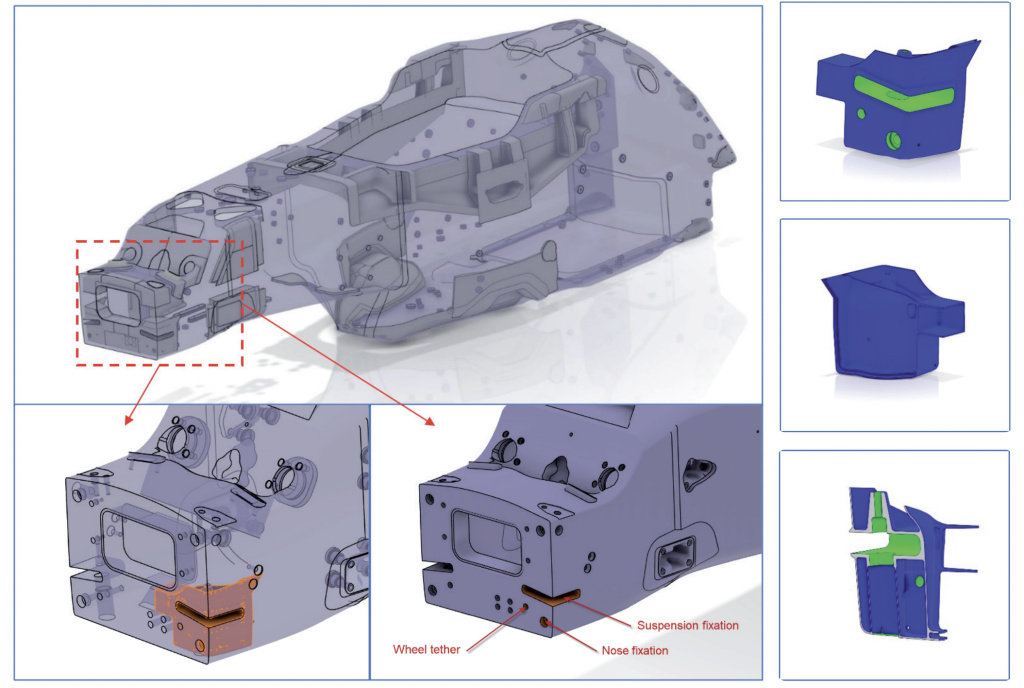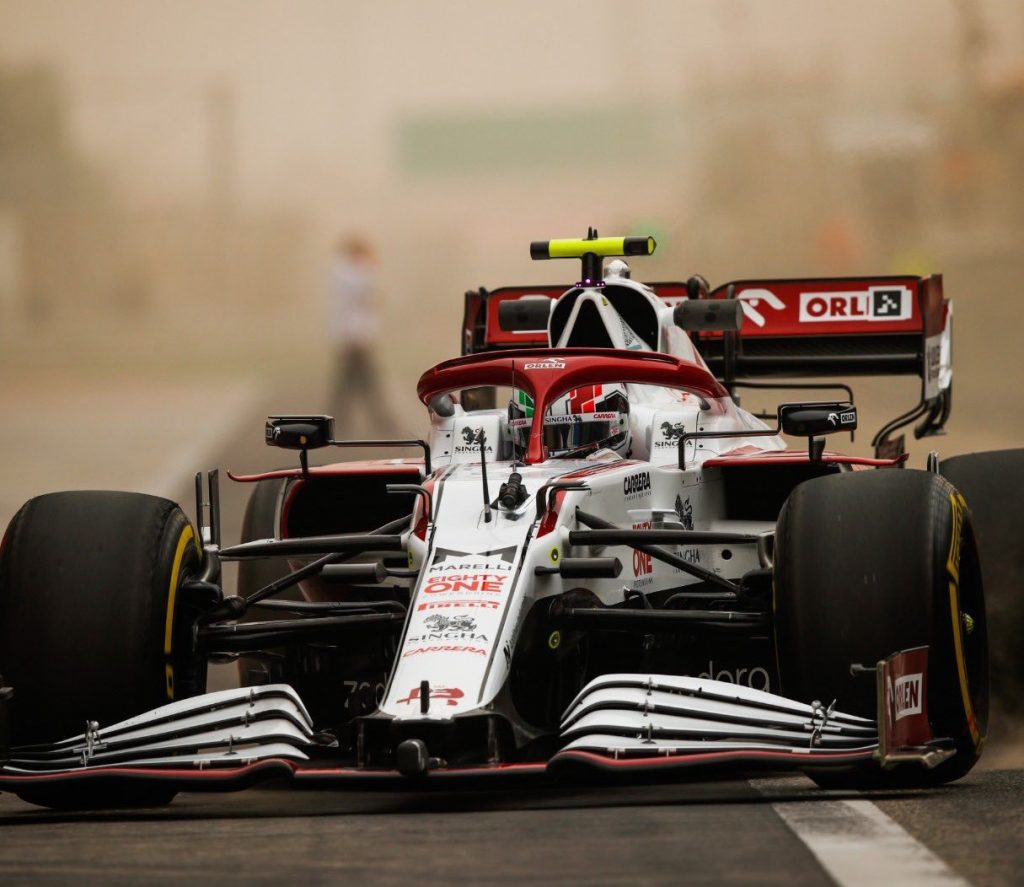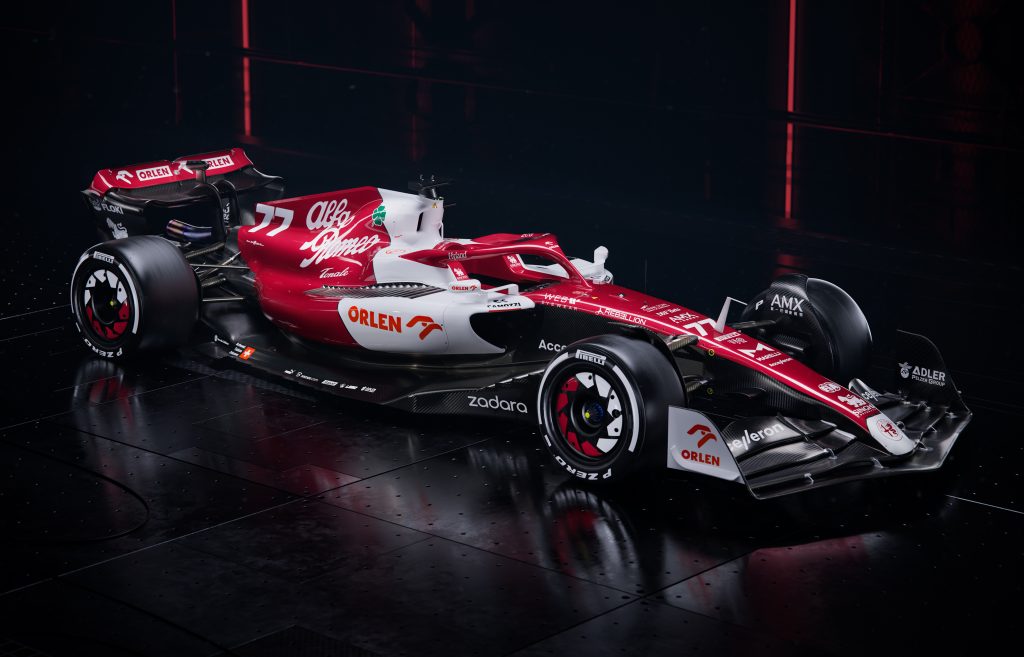Ahead of the 2022 Formula 1 season, Alfa Romeo F1 Team ORLEN has once again turned to additive manufacturing in a bid to gain an edge on its racing rivals.
While the team’s latest challenger has fewer 3D printed aero-parts than before, due to a revamp in F1’s regulations, it’s still said to have multiple additive manufactured “critical components.” The nature of these parts remains shrouded in secrecy, but the team’s partner Additive Industries has now published a case study, which could provide a fascinating insight into their design heading into the new season.

Continued innovation at Sauber
Although the Alfa Romeo team bears the name and badge of a heritage Italian sports car brand, in the world of Formula 1, it operates as part of the wider Sauber Group. The Swiss racing outfit may have struggled to get to the front of the grid in recent years, but away from the track, it has become a key innovator in the world of automotive 3D printing.
Alongside Additive Industries, Sauber has set up a Metal 3D Printing Competence Center, where it initially intended to install two machines in three years, but now 3D prints over 22,000 parts per year. The company also underwent TÜV SÜD’s first AM Production Site Certification in late-2020, before unveiling plans to utilize its F1 expertise to 3D print spares for vintage cars, as part of a new service.
On the track, under the guise of Alfa Romeo, Sauber continues to push for lap time gains as well. Leveraging Additive Industries’ MetalFAB1 system, for example, the team 3D printed 304 parts for last year’s car, the C41, in a way that saw it reduce its related costs by up to 90%. Since then, the Alfa Romeo F1 Team has partnered with AM Solutions too, to bolster its ability to post-process its end-use parts.
Now, in order to optimize the build of its car for the 2022 season, which brings an entirely new set of regulations, the team has not only announced a technical partnership with the Camozzi Group, parent firm of Ingersoll Machine Tools, but worked with Additive Industries again, to move beyond aero-parts and create some of its vital structural elements.

Teasing the additive-boosted C42
Since Additive Industries became one of its suppliers in 2017, the Alfa Romeo F1 Team has incrementally increased the integration of printed parts into its cars. The team’s consumption of ALSi10Mg and Ti64Gd23 doubled and Scalmalloy usage quadrupled between 2020 and 2021 alone, but while the C42 packs 150 3D printed components, fewer are aerodynamic and more are now said to be structural.
In Additive Industries’ case study, it has revealed that one such element of Alfa Romeo’s previous challenger to benefit from being 3D printed, was its front suspension chassis inserts. Designed to reinforce the C41’s sandwich panel chassis structure, and support the affixation of its front suspension and wheel tethers, these parts have traditionally been machined, put together and bonded on.
However, using 3D printing, Alfa Romeo found it was able to consolidate the inserts into single pieces, and build them from robust Ti6Al4V Gd 23, making them able to cope under high loads. In fact, during evaluations, in which the parts were subjected to a physical test rig, that simulated racing conditions of 65kN tensile and 30kN compressive pressure, they proved able withstand varying suspension loads.
Using 3D modeling and NonLinear Finite Element Analysis, Alfa Romeo also managed to iteratively reduce the weight of the 110 x 100 x 130mm inserts to just 580 grams, introducing undercut features into its design that weren’t constrained by the need to leave access for tooling.
Ultimately, Additive Industries had branded the case study a success story that showcases the capability of its technologies in addressing “demanding F1 production requirements,” and while it may not quite indicate the exact areas in which 3D printing has been deployed to build the C42, the firm has teased that it suggests “what the critical parts could be.”
Those interested in reading Additive Industries’ full case study on 3D printed front suspension chassis inserts, can do so now via its website.

High-octane 3D printing in Formula 1
It’s not just Alfa Romeo looking to harness the benefits of 3D printing in a bid to move up the grid, and a whole host of other Formula 1 teams have also turned to the technology in recent years. McLaren Racing, for instance, is known to have used 3D printing trackside for tooling and prototyping applications since at least 2017, and it has a long-running partnership with Stratasys that continues to bear fruit.
Likewise, ahead of last season, Williams Racing unveiled a collaboration with Nexa3D through which it has begun producing custom parts for use within motorsport applications. Specifically, the team is said to be using the NXE400 3D printer to manufacture functional wind tunnel components, to help test the aerodynamic properties of its race cars.
Elsewhere, the French Alpine F1 Team revealed that it had found a very similar use case for 3D Systems’ Accura Composite PIV material in June last year. Using the resin, the team was reportedly able to 3D print wind tunnel testing models, color-optimized to enable high-resolution aerodynamic data collection, in a way that allowed it to better understand the airflow over its 2021 race car.
To stay up to date with the latest 3D printing news, don’t forget to subscribe to the 3D Printing Industry newsletter or follow us on Twitter or liking our page on Facebook.
For a deeper dive into additive manufacturing, you can now subscribe to our Youtube channel, featuring discussion, debriefs, and shots of 3D printing in-action.
Are you looking for a job in the additive manufacturing industry? Visit 3D Printing Jobs for a selection of roles in the industry.
Featured image shows a render of Alfa Romeo F1 Team ORLEN’s 2022 race car. Image via Alfa Romeo F1 Team ORLEN.
